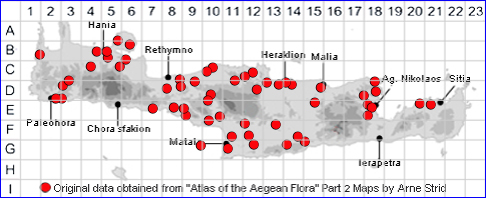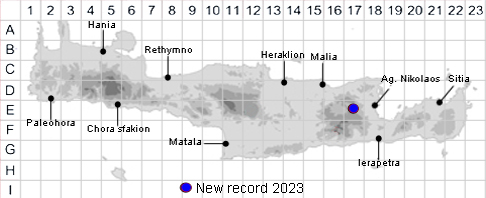
SPECIES DESCRIPTION
ECHIUM PLANTAGINEUM
Including Echium vulgare
Family and Genus:- See- BORAGINACEAE
Common Names:- Purple Viperís-bugloss, Salvation Jane.
Homotypic Synonyms:- Echium creticum subsp. plantagineum.
Meaning:- Echium (Gr) Viper, a name used by the Greek physician Dioscorides'
for a plant that was used to cure snakebite.
Plantagineum (L) Rib-wort-like, plantain-like.
General description:- Erect, softly hairy, annual or biennial, with 1 to many
flowering stems, forming a broad dome or pyramid shape in flower.
Stems:-
1) 20-60 cm., erect. sometims branched from the base.
Leaves:-
1) Basal, 5-14 x c. 1.5 cm., ovate, with prominent lateral veins and soft appressed
bristly-hairs.
2) Cauline, oblong to lanceolate, more or less cordate at the base, and semi-
amplexicaul.
3) Uppermost sessile.
Flowers:-
1) Inflorescence, usually branched.
2) Calyx, 7-10 mm at anthesis, up to 15 mm in fruit.
3) Corolla, 8-30 mm. infundibuliform, blue becoming pink through purple. hairy on
the veins and margins only. usually with 2 exserted stamens.
Fruit:-
1) Nutlets, ovoid-obtusely trigonous. erect, rugose with a flat base.
Key features:-
1) Corolla, 11-40 mm; subglabrous, hairy on veins and the margins only.
2) Basal leaves, usually broadly ovate to spathulate with prominent lateral veins.
Habitat:- Coastal habitats, dry open shrubby vegetation, roadsides, olive groves,
wasteground, 0-600(-1000) m.
Distribution:- Throughout Greece but less common in the interior N. - Native in the
Mediterranean. area and W Europe, introduced as a weed in other parts of the world
with a Mediterranen-type climate. Widespread and common on Crete.
Flowering time:- Mid-March to early June.
Photos by:- Steve Lenton

ECHIUM VULGARE
Homotypic Synonyms:- None
Meaning:- Vulgare (L) Vulgar, common.
Resembling Echium plantagineum, but differering in the following characters:
1) Biennial.
2) More hispid-pubescent.
3) Inflorescence, cylindrical, with many short cymes.
4) At least the lower bracts large and leaf-like.
5) Corolla, somewhat smaller, puberulent on the outer surface, with 4 or 5 long-
exserted stamens.
6) Stem, with small brownish maculatus.
Habitat:- Dry pastures, open deciduous scrub, roadside gravel, (0-1200) m
Distribution:- A widespread Euro-Siberian species and an invasive weed. e.g. in
E North America and New Zeaiand.
Recently discovered (June 2023) on Katharo east Crete by Marinos Gogolas.
Flowering time:- Mid-May to early August.
Photos by Steve Lenton,
~~~~~~~~~~~~~~~~~~~~~~~~~~~~~~~~~~~~~~~~~~~~~~~~~~~~
